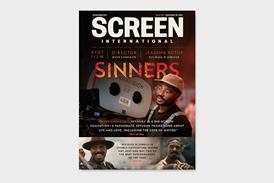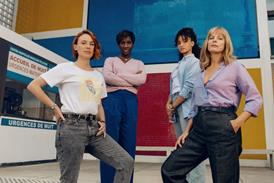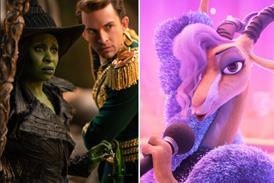When Kathryn Stockett’s novel started rocketing up the book charts, the film-makers working on an adaptation decided to take their project down the studio route.
The story of The Help goes back to September 11, 2001. At the time of the attacks, author Kathryn Stockett was living in New York. Feeling homesick and trying to make sense of that day, Stockett started to write short stories in the voice of her old family maid, Demetrie. It would blossom into one of the biggest literary sensations of recent years and inspire a hit Oscar contender.
“Kathryn and I have been best buddies since we were five years old in Jackson, Mississippi,” says Tate Taylor, an actor and writer-director of The Help. “We went to school together, both of our mums were single mothers in the 1970s and we had African-American maids who were big influences in our lives. Kathryn and I always supported each other and when we were not feeling good we’d tell each other to hold on.”
So Taylor was there for his friend when Stockett, unsure about the merits of her book — an account of the working lives of black maids in civil rights-era Mississippi — and demoralised by rejection letters, passed the manuscript to him. “I was blown away and started thinking of it as a movie,” he says.
‘When the book became a bestseller, we realised it might have a broad enough appeal to be made at the studio level’
Brunson Green, Harbinger Pictures
The touchpaper was lit and Taylor enlisted Brunson Green, an old friend of his and Stockett, who had produced Taylor’s short film Chicken Party and his 2008 feature Pretty Ugly People. The pair officially acquired the rights in April 2008, with the novel scheduled for publication by Penguin in February 2009. Green’s Harbinger Pictures and TV personality Nate Berkus, who would serve as exec-utive producer, funded development.
“Tate and I were preparing the script with the assumption we were going to finance the film independently,” says Green. “Then, when the book became such a beloved bestseller, we realised the film adaptation might have a broad enough appeal to be made at the studio level. We wanted to team up with a trusted film-maker who could advise us on the best way to bring the film to the screen with a studio.”
Taylor mentioned the story to Chris Columbus, the film-maker and 1492 Pictures principal who had previously admired Taylor’s work. “To be quite honest, it sounded interesting but not something I would want to make as a film,” Columbus says. “But I gave it to my wife and she loved the manuscript, so I read it in one night.” Taylor and Green knew it would be a huge boost if they could get Columbus on board, but first he wanted to see a screenplay.
“It was a difficult adaptation because it’s told from three different points of view,” Columbus says. “Cinematically, that’s not going to work, so Tate came in and managed to whittle down a gigantic book into this screenplay.” Taylor completed his long first draft in August 2009 as the book was starting to climb the charts. Columbus loved the screenplay and they began to court the studios.
Big break
The first round of meetings was encouraging, so much so that Participant Media signed up to invest and said it would remain a partner regardless of which studio eventually joined. “There were a lot of places that passed on the movie. Prior to the book’s success, it wasn’t necessarily regarded as a commercial idea because it takes place in the Deep South and concerns difficult issues,” Columbus says.
Then they got a huge break. When the film-makers walked into the offices of DreamWorks principals Stacey Snider and Steven Spielberg, it was early 2010 and the book had just hit number one on the bestseller list. Taylor knew that because of his relative inex-perience he was the potential liability in the pack, so he took Green and art director Mark Ricker down to Mississippi to scout locations and prepare a look book outlining his vision to Snider and Spielberg.
The executives were hooked and DreamWorks joined the project as an equity investor alongside Participant and Participant’s production partner Imagenation Abu Dhabi. Over breakfast in London a short while later, Spielberg asked Columbus to make a serious commitment. “He asked me to be a creative producer on the set,” Columbus says. “Usually, producing for me means being there for the first week, looking at dailies and then it’s bon voyage. I was a little reluctant to put my directing career on hold for six months.”
‘The reason I got into making movies was to tell these kinds of stories’
Chris Columbus, 1492 Pictures
April 2010 brought a flurry of trips between Mississippi, New York and Los Angeles to secure the female ensemble of Viola Davis, Emma Stone, Bryce Dallas Howard, Allison Janney (an old friend of Taylor and Stockett), Sissy Spacek, Jessica Chastain and Octavia Spencer. Interestingly, Stockett based much of the feisty character of Minny Jackson in the book on Spencer, whom she had met on a trip to New Orleans to visit Taylor and Green on the set of Chicken Party, in which Spencer starred.
The 152-page shooting script was ready and production took place from July 23 to October 13, 2010.
True to the spirit of the project, they decided to keep things in Mississippi. “[Mississippi’s] tax credits [at the time] didn’t equal that of Louisiana so we had to meet with the [state] film board and ask them to make exceptions,” Taylor says. “Once we got there, it worked out. We got a lot of stuff for free and people wanted us to film there. It was a great summer experience. It was hot as shit, but it was special. The town of Greenwood [doubling as 1960s Jackson] embraced us.”
Green explains that the 25% cash rebate offered by the state of Mississippi was simpler than rebates in other states, which require reselling. Under the Mississippi scheme, the state sends a cheque to the production within 40 days once expenditures are approved.
At the time of shooting there was a $1m budget cap on each actor, which Mississippi is understood to be trying to raise to $10m to attract bigger talent. The producers secured a grant from the Mississippi Development Authority to close the gap on what would become a $25m budget. “They made us a guinea pig,” Taylor says. “We put $17m into the Greenwood economy.”
“One advantage of shooting such a long script,” Green says, “was that when Tate got into the editing room and figured out how he wanted to tell the story, he was able to do it with existing footage.”
The resulting drama demonstrates an assured hand that should erase any of Taylor’s lingering thoughts about being a liability. The Help premiered on August 10 and has to date grossed $200m worldwide, including more than $169m in North America.
The film has won many fans, just as the book did, and everyone involved will be doing their utmost to ensure it generates traction among voters. Davis in particular has drawn glowing reviews for her central role as the talented but downtrodden Aibileen and is considered a front runner for the best actress Oscar. Spencer too is drawing heat in the supporting actress race.
Taylor, Brunson and Columbus say they would love to work together again. “The process reinvigorated my love of making films,” Columbus says. “The reason I got into making movies was to tell these [kinds of] stories. 1492 wants to make more character-driven movies. It was a wonderful experience. After years and years of watching people on blue screens, to have a front-row seat and watch these incredible actresses perform every day was amazing.”





















No comments yet